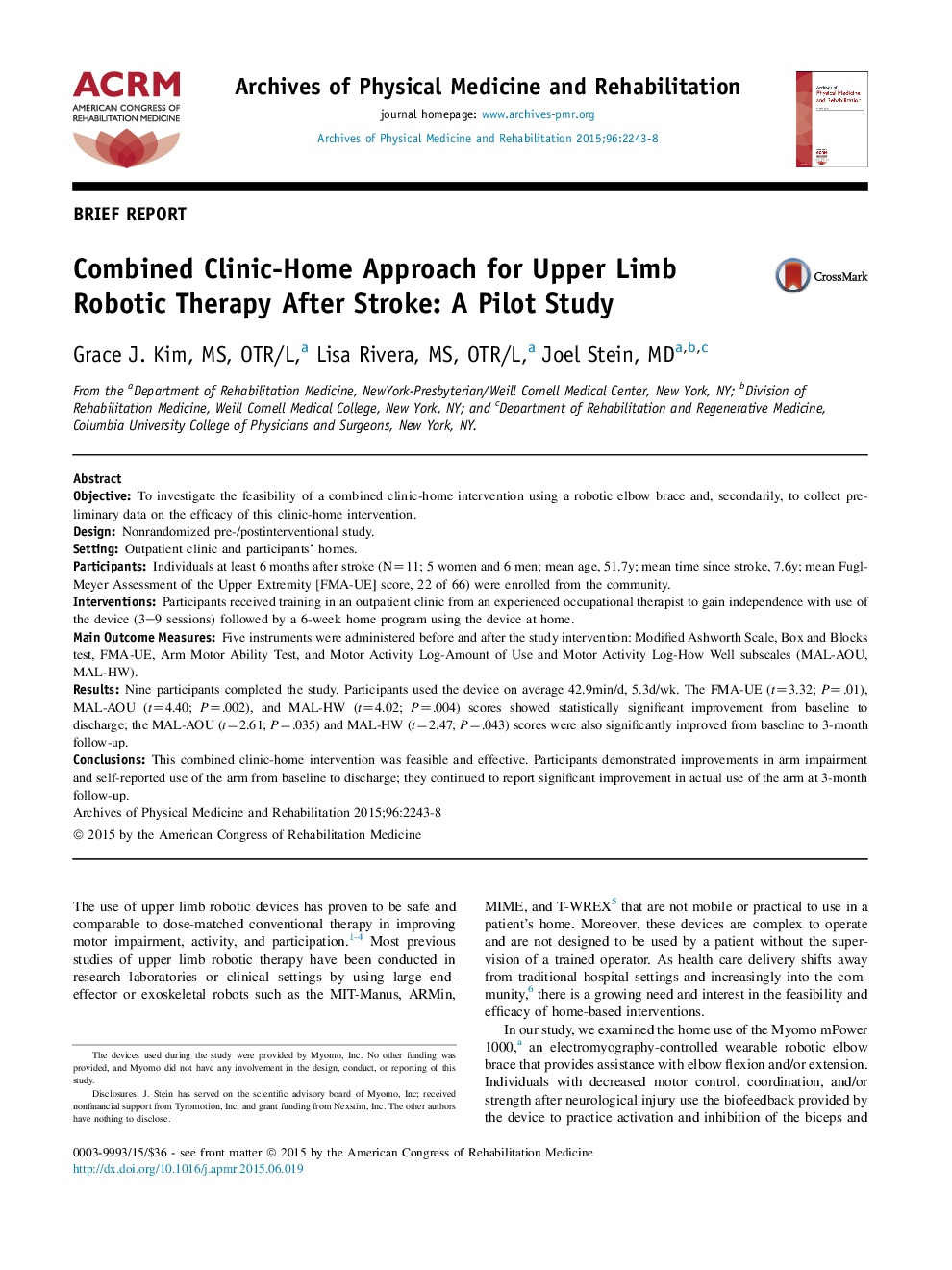| Article ID | Journal | Published Year | Pages | File Type |
|---|---|---|---|---|
| 3448209 | Archives of Physical Medicine and Rehabilitation | 2015 | 6 Pages |
•We examined the feasibility of a combined clinic-home–based intervention using an electromyography-controlled wearable robotic elbow brace.•The 6-week home program was feasible and effective.•Participants had significant improvements in arm impairment and self-reported functional use of the arm from baseline to discharge and continued to report significant improvement in actual use at 3-month follow-up.
ObjectiveTo investigate the feasibility of a combined clinic-home intervention using a robotic elbow brace and, secondarily, to collect preliminary data on the efficacy of this clinic-home intervention.DesignNonrandomized pre-/postinterventional study.SettingOutpatient clinic and participants' homes.ParticipantsIndividuals at least 6 months after stroke (N=11; 5 women and 6 men; mean age, 51.7y; mean time since stroke, 7.6y; mean Fugl-Meyer Assessment of the Upper Extremity [FMA-UE] score, 22 of 66) were enrolled from the community.InterventionsParticipants received training in an outpatient clinic from an experienced occupational therapist to gain independence with use of the device (3–9 sessions) followed by a 6-week home program using the device at home.Main Outcome MeasuresFive instruments were administered before and after the study intervention: Modified Ashworth Scale, Box and Blocks test, FMA-UE, Arm Motor Ability Test, and Motor Activity Log-Amount of Use and Motor Activity Log-How Well subscales (MAL-AOU, MAL-HW).ResultsNine participants completed the study. Participants used the device on average 42.9min/d, 5.3d/wk. The FMA-UE (t=3.32; P=.01), MAL-AOU (t=4.40; P=.002), and MAL-HW (t=4.02; P=.004) scores showed statistically significant improvement from baseline to discharge; the MAL-AOU (t=2.61; P=.035) and MAL-HW (t=2.47; P=.043) scores were also significantly improved from baseline to 3-month follow-up.ConclusionsThis combined clinic-home intervention was feasible and effective. Participants demonstrated improvements in arm impairment and self-reported use of the arm from baseline to discharge; they continued to report significant improvement in actual use of the arm at 3-month follow-up.
